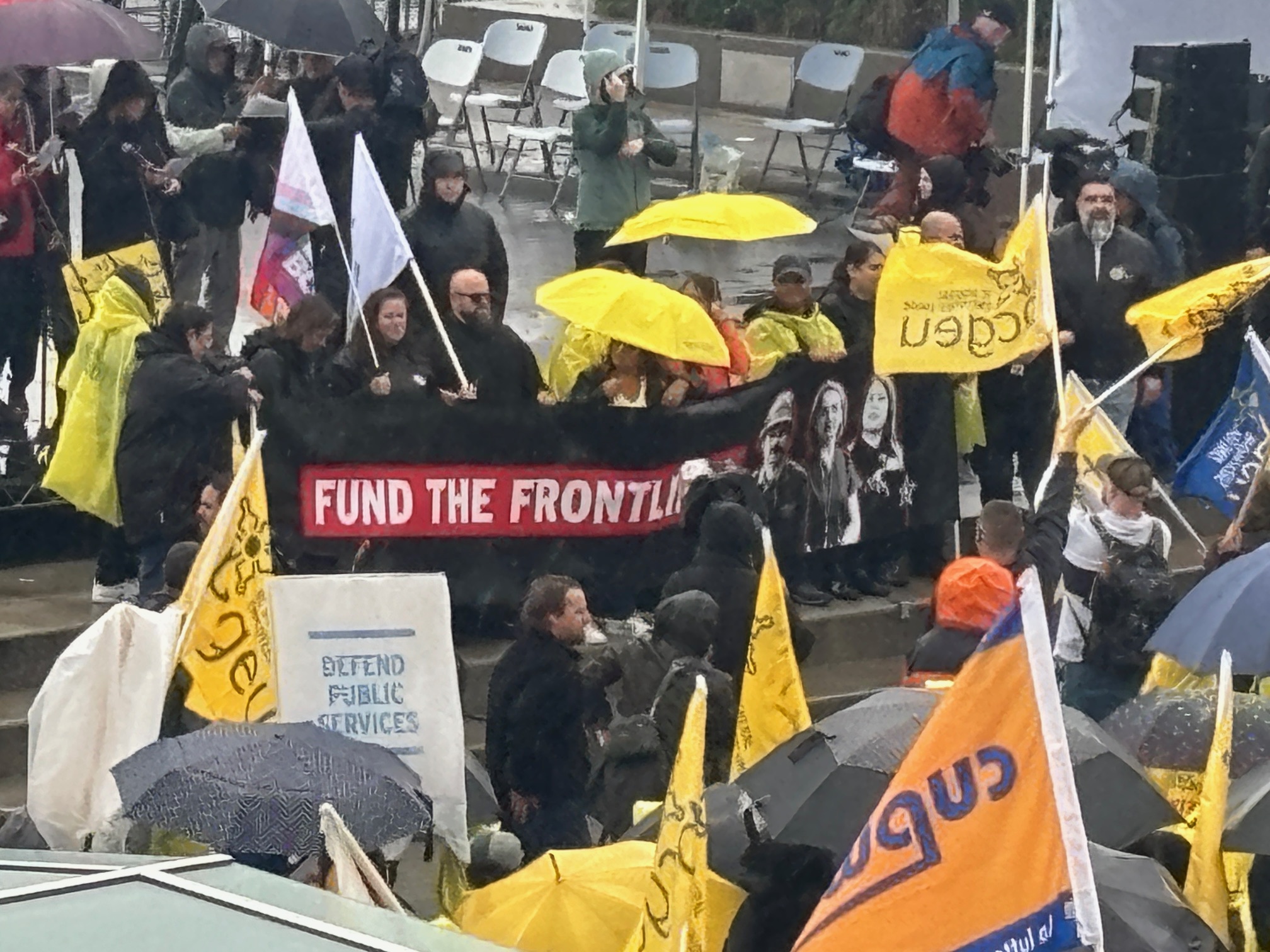
With both sides digging in and no clear path forward. Monday’s mass rally in Victoria — a high-visibility demonstration timed to coincide with the start of the legislature’s fall session — underscored the heightening tension and political stakes of the dispute.At the heart of the impasse is the union’s push for a general wage increase of 4 percent per year over two years, intended to preserve workers’ purchasing power against inflation. The government has countered with a more modest general wage offer—2 percent per year over the same period—and claims that its total offer reaches 5 percent when including what it describes as market adjustments and other supplemental payments. The union rejects this framing, arguing that these extra components are uneven, uncertain, and do not amount to a meaningful raise for many members.
Talks made a brief attempt to resume last week, but they collapsed in less than 24 hours. Union leadership calls this failure to engage significant: it signals, in their view, that the government is either unwilling or unable to negotiate seriously. In response, the BCGEU has escalated its job action. On Monday alone, the union walked off an additional 106 worksites, pushing the total number affected provincewide past 300. The membership engaged in job action now numbers in the tens of thousands.

At the same time, the rally on the Legislature’s lawn drew an estimated 10,000 participants from across the province—BCGEU members and allies from other unions alike. Speeches repeated what many already know: public services depend on the labour of these workers, and contract conditions that fail to keep pace with the cost of living undercut both morale and sustainability.
From the government’s vantage, the counterarguments may be narrowly fiscal but pointed. Officials maintain the province must balance limited revenues, rising debt costs, and competing demands across sectors. The framing emphasizes responsible budgeting and warns against open-ended commitments that could exacerbate deficits. Still, those defenses are being met with sharper public critique: opposition figures, labour-watchers, and critics of austerity point out that cancelling or underfunding services in response to labour pressure may risk worse costs—social, political, or otherwise.
As week six unfolds, the power differential lies in endurance. Each day the strike continues without a substantive offer weakens public patience but also underscores the resolve of workers. If they can sustain the pressure—maintaining strike discipline, intensifying worksite walkouts, and leveraging public sympathy—they may widen the government’s vulnerability. Conversely, if the government can hold its ground, convince key voters that further concessions are untenable, and wait out worker fatigue, its negotiating position may stiffen.

One complicating variable is service disruption. The longer the impasse drags, the higher the risk that essential functions—licensing, inspections, enforcement, regulatory services—begin to lag visibly. When that happens, public frustration shifts from sympathy to demand. In that sense, both sides dance on a knife’s edge: the union must push hard without overextending, and the government must hold firm without appearing negligent.
Trust is another fissure. Public servants want assurance that any wage increases are durable, transparent, and inclusive. They are skeptical of partial or conditional “market” add-ons, which they see as vulnerable to future cuts or exclusions. Meanwhile, the government must show that its fiscal constraints are real, not simply rhetorical, and that permanent obligations will not destabilize budgets.
For now, the negotiation chamber remains silent. No new meeting dates have been publicized, and the next move may rest on sequencing: whether bargaining reopens on government terms, or whether the union forces a shift through further escalation. Monday’s rally was more than symbolic: it was a message that the strike is far from over—and that the union expects more than talking points, but a concrete, fair offer.
If the upcoming days produce no breakthrough, the question will shift from when to how badly disruption deepens. But even in the stalemate, Monday’s show of force will echo: the union is asserting it will not be sidelined until its claims are heard, and the province is being reminded that political cost has structural weight.
